|
Yet if we were to take a pet (like this cute Kitten, Mo-Mo) to a vet we would ensure the pet completes it’s full amount of medication or exercise. If we were raising a young animal or human we would encourage it to live life with freedom and joy - to choose what they do and not worry about others’ expectations. We would love them unconditionally. Part of my work is helping myself and others learn to love, care and nourish ourselves, as if we were another - to embed the responsibility deep into our bones. To remember everyday that your job is to love this one, as if you had just been handed a beautiful baby and told to look after it. How do we do this? First we must realise why we don’t...
We continue these mechanisms even though we are the ones we now need care from So the first step is to understand our traumas through discussion, meditation, investigation with a trusted therapist. If you’d like to begin that work contact me here.
Within my work I help people heal the body and train the mind. Here are some of the main ways in which we do this: Things we can do We can do many things to help our inner vulnerable parts:
Re-schooling the mind with Healthier Habits We were taught maths and English in school, but no one taught us how to live well. They didn’t really teach us to challenge our own thoughts, channel our emotions. In sessions we learn to bring in new ways of thinking and relating to ourselves that create more compassion, self-care, discipline and of course the vital energy that comes with joy and play. These habits can enrich our habits of productivity, so we can be functional AND feel good.
0 Comments
I've had a depressing week. I've been comparing myself and letting my mind drag me into a low mood by believing (or not challenging) the stories of comparison, regret and self judgement:
This kind of thinking is responsible for so much despair in my life and so many other people's. I coach people and have the privilege of helping them to escape this endless loop of misery and internal drama. But that doesn't mean I can always escape it myself. In fact I notice how I often post all the nice bits of life on social media - then other people can compare themselves negatively to me! Oh dear! With practice I'm getting more resilient to comparison. What is the practice? I'm fortunate enough to have access to some pretty awesome friends and therapists and this week I've been taking a look at my inner critic in more detail, as well as the vulnerable inner victim. In the paradigm of 'parts work' (AKA internal family systems, voice dialogue, fooling etc) we recognise there are many parts at play in our internal landscape. There parts are like people of their own accord. If you pay attention to yourself you'll notice your energy levels, voice and posture change when you are 'playing out' different parts.
In one recent therapy session I took time to go into my sad 'I don't know what I'm doing' part and really empathise with him. I was able to link it back to a 12 year old version of me that had trauma when entering secondary school. He felt (and still feels) deflated, small and depressed at the challenges of 'big-boy school'. My posture become hunched and my voice is squeezed. I feel this today whenever I encounter setbacks, particularly related to my work or areas where I demonstrate I'm a capable and intelligent person. I also played out the critical parts of me - the thinkers and judges. These parts embody a more confident and even aggressive energy and posture. These relate to parents, bullies, teachers and... myself. They were necessary parts of myself that helped to protect me. The purpose of giving these parts space to express themselves is:
What does this look like? This morning I gave a lot more space to the critics - who really had some good advice (albeit delivered with some anger and judgements). I took a mirror and placed it in front of me and I began to lay out all the criticisms - full throttle, for 10 minutes! I went through what I should do and how I have been so wrong. Turns out I really do want to be more successful, prosperous and have more ease and fun and if I listen to the advice and weed out the condemning judgements. I was only able to do this because I've given each part that needed it some space. In my therapy session the vulnerable victim cried - a lot! That cathartic grieving left space for me to hear, understand and appreciate the advice of the inner critics. The beautiful side effect of all this is that the comparison mindset vanishes (along with the despair) and is replaced with a more appreciative mind - that sees the present moment as a gift - an opportunity to live! Now is wow! Today I've been exercising, working, reading and enjoying nature. It's not perfect and I still get the symptoms of 'compare and despair' occasionaly, but now I can recognise it and meet it with understanding , compassion and some really good 'self care'. If this sounds like something you'd like to explore let me know and we can do some coaching together, I'm offering a free 1 hr intro session from October 2021. Book here. In reality, however, these ‘negative’ emotions can be helpful. The negativity comes when we try to fight them via:
These are the basics of our learned coping mechanisms or conditioned reaction, which are largely unconscious (meaning we are not aware of them, or in control of them). They developed during childhood, when they were perceived as absolutely necessary reactions, to receive attention, love and/or safety when we needed it most. We carry these deep in our nervous system. Something happens that ‘triggers’ past pain, and activates the mechanism. It can be anything, from a specific type of person, environment or even a raised eyebrow to a shouted word. The reactions triggered can be severe, like a full-on panic attack, or more subtle, like anxiety and a tight chest. For myself I notice that I sometimes get very sleepy and tired during emotional conversations with my partner. I realised this is a mechanism learned from childhood to unconsciously help myself avoid conflict and forced emotional dumping and enmeshment with parents). I have since learned to pause when I yawn, and name this as a 'conditioned reaction', which often stops it. Which leads me into the next step... How to heal our conditioned reactions
The methods I work with involve multiple therapies to work on grieving, accepting and revaluating past interpretations and coping mechanisms in both the mind and the body. I also advocate for self healing through self awareness and self love and coach myself and others to do this in everyday life. “Your task is not to seek for love, but merely to seek and find all the barriers within yourself that you have built against it.” ― Rumi We can do the healing work moment-to-moment by utilising these so-called negative emotions. First I remind people to ‘celebrate the catch’ - to recognise that there is a power in being able to recognise an emotion and se it could be valuable. Each powerful emotion is a clue to help you learn about yourself, to understand your patterns, mechanisms and past pains. I encourage people to become fascinated with these moments, like they are gold. Feeling the body as we ask ourselves these key questions:
This understanding is the first step in the STOP technique, which is one tool that I teach to my clients. In reality the emotions are not just about the situation, but more about our ‘thoughts about the situation’ (stories). Most stories are rooted in the past - a conditioned judgement about how we should react, internalised. so much that we use them as expectations; not just for ourselves, but for others. Shame, anger, anxiety and even sadness became tools to make sure these hidden expectations are met as children, but of course they are ineffective as adults, in the present context. The work of healing begins by admitting these hidden stories of expectations to ourselves internally. As we do the work of Acceptance and Commitment Therapy (ACT), we learn that it’s OK to have judgements and feelings, and we can find more helpful ways to act that are aligned with what we value and want. For example, if I realise I’m holding an expectation for another person to ‘calm down and sort themselves out’ then I can start to give that to myself, giving me a chance to help them and also achieve what I want: calm, loving connection. The real gold is in the process of helping ourselves; finding our power through admission of what we really feel and think, instead of fighting and repressing the emotion. We can turn a so-called ‘negative emotion’ into a powerful and positive force to help us heal, grow and create the outcomes we want, instead of perpetuating the outcomes we hate. So try these questions today: if you feel ‘bad’, STOP and ask yourself “what is so bad about right now?” By admitting the truth we are set free, even if we are a bit pissed off first. I hope this helps you. If you’d like any help finding more inner freedom and empowerment please call me today. I believe we can generate unconditional love through a practice of loving connection, which helps us feel more love towards everything and everyone. How? Well just did a lovely practice with the Monday group, that I really enjoy. I call it the ‘I love you’ Meditation. It does what it says on the tin. Many meditations use visual imagery to create a loving feeling, but this one is even easier. It uses the power of repetition. Just repeat the thought “I love you” over and over, silently, on the outbreath. Here’s more detail:
"Practicing love turns you into a love unicorn"I have also found self love helps create ease in giving love to others - we exude love and it becomes easy and familiar to love. What’s your experience? Try this guided meditation now and find out. Also available on YouTube. I am changing my practice to make love the centre of everything I do. This is as part of a more trauma informed practice that I am bringing into my work, after fascination with the work of Gabor Mate, Peter Levine and Nicole Lepera. If you would like to do some coaching work and get more love in your life contact me, or come along to the Monday group sessions. With Love Neil Morbey In this short BLOG I'm sharing a slide from session 2 of my course 'Mindfulness and Emotional Resilience', where we focus on habits. I'm doing this because I am currently using this process to begin a habit of more frequent online sharing and blog writing. this is week 1 for me and I hope it inspires you to begin a new habit today.
1. STOP judging yourself with ‘shoulds and needs’ (use the STOP technique) and develop a loving attitude to your new habit I believe that self judgement is our worst enemy in the creation of a habit. If we use excessive 'shoulds and needs' then we are using fear to motivate. This is a primitive and short lived motivator that will only make the bait feel heavy and stressful. Your willpower will give way. Instead try and address those 'shoulds and needs' using a tool, like the STOP technique (which we teach on the course) and develop a positive and purposeful attitude towards your actions. As Tony Robbins says: "use inspiration not desperation!" 2. Take time to consider why first, then what, when, where. Write it down The book 'Start with Why' by Simon Sinek details how developing a clear WHY allows you to be selective of the advice you take on board. You need to make sure that WHAT and HOW you do things is consistent with your WHY. A WHY provides a filter for decision making which differentiates his quote: “Achievements comes when you pursue and attain WHAT you want. Success comes when you are clear in pursuit of WHY you want it. 3. Reduce the amount to its minimal - start with tiny steps. One habit at a time. You can increase and habit stack later I learned a lot from Seth Godin , author of 'The One Thing' who reminds me "The hardest move in Yoga is rolling out the mat'. In other words the starting energy is the difficult bit. So make it small, REALLY small. You can gradually improve and the early habit can act as a sequence starter that you can stack more habits onto. 4. Share publicly and/or with an accountability buddy / contract We have a brain that is constantly worrying about what others think of us, and is trying to be efficient with resources. Use it to your advantage - include others to check on you and include a contract to make it have consequences, if you like that My contract uses Stikk to add a financial consequence if I don't stick to the habit! 5. Place positive triggers (notifications, posters, images, props) at home/on phone. Remove negative ones. I find it so helpful to have my trainers out ready if I'm intending on going for a run and I also like to record a positive association reminder on my phone and/or YouTube (and recite it daily ) to keep my intention in mind. I have removed distractions from my phone and environment and I continue to do this as an ongoing process. For me my calendar provides the most useful prompts. 6. At the end of the day review how your commitment went well Make the pattern pleasurable and purposeful by adding rewards and self celebration. I find the end of the day a great time to do this as it puts my mind into a positive place before bed time. We humans are great at denying our achievements. Stop it! Celebrate yourself! 7. If you don’t manage it one day activate your inner curious compassion. Journal about what stopped you, how you feel and what you imagine. Begin this list again... We are imperfect - you will fail. That is good. It shows you are trying and discovering the blocks. This is a time to really become fascinated with the blocks and use the techniques I teach to help you. These seven steps are an iterative process - I repeat them to refine my habits. Can I help you to start a new habit? I currently have a group beginning a habit of meditation and journaling. I can work with you one-to-one or in a group (new ones coming soon). Please get in touch to find out more. The real reason I posted this is because the three videos at the bottom blew my socks off. If you want just skip to them - they are worth it! I recently began a formal qualification in Counselling and I'm loving it. I've been a trained coach and mindfulness practitioner for years, but often I found the biggest shifts occur in people when they were given space to express repressed emotions and all I had to do was counsel them. In this short blog I'll write about the main skills and styles in counselling. I hope to complete my counselling training by 2024.
Self Reflection and Personal Development We all have blind spots and as 'helpers' we must work on becoming aware of our own, so that we are capable of holing the counselling space and not accidently end up being counselled by the client. Blind spots could be a belief that some character trait is bad, or a leaning towards certain relationship styles, or a slight prejudice against a certain type of person. Self reflection helps us see and understand ourselves. Integration of blind spots Our job then is to 'integrate them' so that we are less likely to fall into automatic reaction. Integration is the process of maturity, where we discover parts of ourselves that we repress or abandon and bring them into our awareness and make them more cooperative towards our values and goals (This is my definition. There are many others). An example for myself is I know my mind is critical of 'weakness' (because of my past conditioning) and I integrate that by priming useful reminders for myself and I use mindfulness to see a person as they are, not how I think they should be. In a session now, if I notice my critical mind I will thank it and take a breath, remind it that it's OK, and bring my full attention back to the present moment. This could happen within a single second. Styles of CounsellingEveryone has their own style, based on their own understanding of how the psyche actually works. Here is some basic history of the main influences. The three videos below are incredibly useful in showing three main styles used today. We begin though with two big pioneers from the early 1900's:
The three big modern styles - check out the videos! These practitioners from 1960-1990 are shown in striking contrast on the videos above.
My counselling and coaching offer
I work with all these modes in my work, alongside more goal oriented coaching. This blog talks about the difference . If you feel drawn to a particular type of therapy contact me and let's work together. We can all use a little help to discover our repressed patterns of thought and behaviour and integrate them to become more empowered and fulfilled people. TLDR: The main insights of this blog
MY RECENT EXPERIENCES I wrote this blog as a reflection of three distinct experiences recently:
WE EVOLVED TO MOVE, BUT NOW WE INHIBIT What these showed me is that I often want to pause and notice my emotion and sometimes 'move with' with it' to get clarity. I realised that us humans are basically monkeys with more brains. Like any animal, or monkey, we live on fear and libido - survive and reproduce. We train our instinctive reactions through past experience. Painful past experience is our main trainer. Modern humans have these issues :
INTUITION AND INSTINCT - SOURCES OF POWER When you think about it our bodies have more than one brain and more than one mode. We have:
THE LANGUAGE OF THE BODY - FEELINGS AND URGES - DON'T LET THEM DRIVE THE BUS Imagine the conscious you is like a driver of a school bus, except the bus is full of child monkeys! When things are in balance we are 'happy' and the bus is on track passengers remain quiet. When the passengers sense a potential threat or desire they make noise at the driver (via emotions). They are trying steer you towards desired outcomes and sexual partners and away from pain. The more fearful emotional feelings and urges could be:
REACTIVE URGES When passengers feel more threatened they react quickly, to avoid danger, trying to take control of the bus for a moment. It might not be an actual danger though. It's likely that the current event reminds your nervous system of a past painful experience and the instincts automatically activate a reaction mechanism to avoid the pain. This could be something along the lines of:
Be a SANE driver So the driver needs to maintain control, to listen and acknowledge, but not to buy into the emotional reaction. It may be necessary to allow a physical response to channel the instinctive urges before the can calm the bus down. One method is a strategy I teach, called 'SANE':
PLAY: ENCOURAGE YOURSELF TO MOVE & EXPRESS The best bus drivers will have a healthy relationship with the passengers and will be interested in their feelings and needs. This driver will occasionally realise that monkeys need movement, reassurance and PLAY! Here are some examples of playful expressing activities I do regularly, to meet the need of my inner child/monkey like passengers:
IF STUCK, USE A TOOL If you are really stuck and can’t access your playfulness, then here is a practice of recognising the interpretation that is setting off the instinctive reactions and playing with the words. I do this with myself and my clients for about five minutes. It is inspired by Acceptance and Commitment Therapy (ACT):
MOVING ON AND THINKING MORE CLEARLY The aim is not to stay stuck in the feeling, but to allow the feeling to be expressed and then move into clear thinking, so you can see viable options move forward and feel the motivation to act. This works so much better when you connect and move first. If you would like help with this coach people specifically to think, feel and express themselves and I teach SANE strategies in my latest Mindful Relating course. Register now if you’d like to learn how to tune into your intuition and channel its power to be helpful instead of inhibited. Or do some private coaching with me.
“I’m a mindfulness coach, I’m not supposed to feel miserable! Why the hell am I so low?” These were the words uttered by my brain this morning, as I woke up and laid there, thinking. That was rubbish so I avoided the thought with a solid 45 minutes of phone time, until… Clap! (this is actually a tool I teach!)
“I’m better than this shit!” I got up and made my bed and decided to go outside. I remembered some of my sources of inspiration that cheer me up:
Break the lockdown - give myself permission to EXPRESS MYSELF. This I remembered is the main reason I feel crap sometimes. I am creating my own personal lockdown, because I judge myself. I compare myself to some imagined standard of how I should be. It’s not safe to be myself, to express myself - my brain won't allow it. Bullshit! It's not true that it's not safe. If the STOP technique (another tool I teach in collaboration with Mark Dunn) has taught me anything it is that the brain talks a lot of shit. But we can’t just tell ourselves that. The self judgement keeps us locked in to a spiral of shitty habits. So what can we do? Give yourself permission - allow! Think about it. If judgement, resistance and comparison is at the root of our suffering and the perpetuation of our stuckness then stop fighting it and allow it - just for 10 minutes even! You can then short circuit your lockdown blues. For example:
I’ve found emotions don’t last long if I give them permission to be here. If I EXPRESS THEM without harming anyone else. Personally I like to play with them, play the fool. This is a result of my clowning and fooling work with people like Holly Stoppit and Jamie Catto, but also my intuition. When we play we are giving ourselves permission to live life as ourselves, without the 'personal lockdown'. So if you want to break the personal lockdown blues can you play with them? How can you express your blues today? (or whatever else you have inside) If you want some help with this let me know. I'm offering some reduced price sessions for people in the lockdown struggling with money - check out my Coaching page or email me: [email protected] for a callback chat A behavioral brain trick called “dopamine fasting” has been around for a while now - the idea of restricting most of your pleasurable daily activities — from social media, to watching videos, gaming, or even eating — you can “reset” your brain. The idea also plays into people’s simplistic ideas about how the brain works. But does it work? TLDR: No, not in my opinion. It is still focused on using willpower to overcome primal drives, using a high stress method of deprivation, rooted in the false notion that dopamine imbalances cause bad habits and addictions. They don't, cultural and mental persecution does. Dopamine rises are the result of MAD habits, caused by trauma and disconnection with positive things. Instead let’s change all that. Let's take self-judgement, comparison and expectation out of the equation so that there is less stress (the very thing that drives the craving for relief) and more inspiration. This blog is inspired by session 2 of my course: Mindfulness and Emotional Resilience. Here is a summary of some of that session: Are habits biological or psychological or environmental?Our reward systems - the old view of addiction Dopamine is the neurotransmitter that signals anticipation of pleasure. Ir helps you be motivated to get things done and to move. Dopamine pushes you to crave more stimulus. This is a natural drive and nothing is wrong with it. Modern life offers a lot of stimulation of dopamine. Feeling over-stimulated is often a sign of doing too much and getting a high dopamine hit. This can inhibit present moment focus and stop you from enjoying simple things. The balance of dopamine and it's antidote, serotonin, plays a part in our understanding of addiction and I wrote about that here - but does this isn't the root cause, as we once thought. It's not in the genes, it's in our society and in your own mind! For years we've been labouring under the assumption that addicts are that way due to an imbalance of dopamine and serotonin, and so we've relied on drugs to balance these levels. This can help in the short term, but not long term. That's because dopamine is the result of a lack of positive connection. If a person is brought up in a negative environment, or doesn't have meaningful work, sustainable income or worse, has a criminal record, then they will feel the pressure of life as stress in the body and negative thinking in the mind. This inner and outer persecucion is the very thing that humans need relief from as shown in these insightful videos:
How you think about it matters We all have 'monkey minds' that tend to think negatively. We often beat ourselves up about our habits. We have high expectations of ourselves and others, so we talk about our habits as 'bad'. This drives the habits - it adds stress, which makes the cravings for relief stronger and make it more likely you'll relapse into the old habit, eventually. A ‘dopamine detox’ is a way of thinking that uses a serious amount of willpower an ‘deprivation stress' to remove all pleasure. Willpower can get used up. The internal slave driver will sap your energy and make things less enjoyable. How long will it be until you need to escape and find some instant pleasure from the old habit again? What you are really running from is the negativity of the mind, felt as stress in your body. Your body needs some relief. A holiday perhaps? Willpower!Reframe your habit change, positively - as a holiday! If you can use the mind in a cooperative, instead of punishing way then you'll be happier AND get more done. Positive, empowered thinking will not add stress, it will add enjoyment! I have a few suggestions to help you here:
Here's some ideas...  MAD habit holiday One experiment you can try is a holiday. Pick one thing that you notice is a old, unhelpful habit and decide to take a short holiday from it. Write it down and look forward to planning a trip away from it. Remember - it's a treat. Time off to enjoy yourself. You might consider something you'd actually like to do instead. Write that down too. A holiday can be an hour, a day, a week, or even a whole month of liberation from something stressful and unhelpful, You lucky devil! here are some more tools to help you... Dopamine Doggie Reframe
Clap yourself out of it!
Travel Companion: Accountability BuddyFind someone enthusiastic, to go on holiday with
I like to tell everyone I’m on holiday and celebrate it daily. I can do it so much better if I holiday with another person. We can call this an ‘accountability buddy’. We encourage and celebrate daily. If we get an urge? Tell them. Call each other ‘lucky swine!’ for the fact they have painful cravings. Ha! That’s because the pain is a good sign - a sign of growth and opportunities for more growth if framed correctly. Bon Voyage! Ps. After your holiday you can choose, naturally, without any ‘shoulds’ or willpower, how to re balance your habits. I will probably still look at visual stimulus sometimes! ;) Want to experience this course or 1:1 coaching - contact me now. This blog is my perspective on why we repeat patterns, get attracted to people who trigger us, and why nothing is wrong - this is all good stuff, if we choose to play with it. Reactions Rule We are emotional creatures (more than logical). Most of our 'reactions' are caused by hidden emotional wounds, obscured by defense mechanisms . Until we can see them and trace them to their origin we will react cluelessly to them. People in therapy are going through a process of recognising, accepting and working with these internal wounds and reactions. Michael Singer calls these wounds, the inner thorns. I tend to agree. The clues that you are reacting to an inner wound are 'disturbance':
I have found the best way I can change my patterns is to prepare to remember. If I do some prep work then I can spot the wounded reactions and more easily interrupt them. Prep involves facing our fears. What is the underlying need or fear? Fear and need are two sides of the same coin. So working together and switching between fear and need the two questions you could ask repeatedly are:
Here's an interview between a Client (C) and Questioner (Q): C: "I need to get this job and I'm feeling anxious all the time" Q: 'What is the need beneath that?' C: "I need money and a career that I like!" Q: 'What is the need beneath that?' C: "I guess security. And maybe satisfaction?... No... Purpose!" Q: 'What is the need beneath that?' C: "I don't know!" Q: 'Then what is the fear of might happen?' C: "What if I don't get it? I'll be penniless, broke... my girlfriend might leave me." Q: 'Then what is the fear of might happen?' C: "It'd be awful. I'd feel like such a loser - alone and lost" Q: 'Then what is the fear of might happen?' C: "I don't know... I guess I could become depressed, go mad and lose the will to live!" Q: 'What is the need beneath that?' C: "I guess I'm needing connection and the knowledge that I'm OK" Q: 'So what you're really needing is a sense of connection and acceptance" C: "Yes. I want a job for those reasons. I guess it's not really about the job after all..." Deep Diving Reveals Insights If we keep diving into this 'fear and need' we will get closer to the wounding within. However the nervous system does not always think in verbal language or even in images. Some stuff is pre-verbal and not remembered, so much be explored through the emotional system itself. You have to 'feel to heal'. The Role of Mindfulness
Meditation and mindfulness invite us to see beyond our thoughts and stories, our words and imaginations, to look into the void within, to feel the sensations and emotions of the body and to hold them in loving awareness, so that we may find and heal wounds and change patterns of behaviour. To cultivate loving responses rather than fearful reactions. The Nervous System Wants a Disconfirming Experience Until we do realise our reactions we will continue to unconsciously create that which we fear the most. I believe this is our nervous system's way of recreating the original wound, as a way of finding a healing experience, or a 'disconfirming' experience. For example: A client of mine was afraid of getting close to men, because of a difficult early experience in her life. When she experienced a man who she wanted to be close to, and she engaged with him with openness and some coaching, they found a surprise. With open communication and boundary skills the man was loving, kind and safe. This 'disconfirming experience' helped her to relax and enjoy his company. She was drawn to men like this and, unlike in her youth, the person was not mean. It meant she could relax, knowing 'it isn't always true' that men are nasty. That meant she could let herself get closer to men. She could do this in a safe, balanced way. Gradual Exposure Reduces Fear The original difficult experience, and many others, confirmed the fear was legitimate. The only way to change that is to expose ourselves, vulnerably, to something similar, and have a different outcome - one that changes the way the mind and body perceive the reality. To see that positive outcomes are possible and then we can relax and stop reacting through fear. Be Process Oriented Life is a process. We can be a slave to it or we can be an active participant and use the process to help us heal, grow and learn. Coaching, therapy and training mindfulness is simply a way of getting into that process more consciously, so we can move it forward. It will be painful, it will be difficult (at times) but nothing is wrong. This is OK. This is exactly where you need to be. Create Safer Exposure For Yourself, Now. If you'd like to begin this process, in a safe fun way, come and chat with me and do an introduction Coaching session or a course with one of my Groups or In your Workplace. You can contact me below. It's 7:00 am and as I wake up I habitually reach for my phone. Do you do the same? I notice. I stop. I take a breath and make a decision - not today. Today I will connect with what is important, what is real and I'll take my sweet time about it. I'll leave the smartphone off for a bit. I have realised for myself (and for many of my clients), that the overstimulation from smartphones, TV, advertising, fast-paced movies and click bait is one of the key reasons that we struggle to focus. Rather than go into the science (which you can find here or a video) I'd like to offer you some experiential learning. It'll take 5 minutes. (Here is my short video to guide you) Go sit in stillness for 3 minutes. Tune into your bodily sensations as you take five deep in-breaths, through the nose, into a soft belly, letting out five long and smooth out breaths through an open mouth, allowing a sound (like the ocean). Close your eyes. Notice how it all feels. Yes your mind will be buzzing still, and that's ok. Keep breathing and refocusing on sensations, relaxing your face and smiling a little, if you like. Count your breath for the remainder of the time as you feel the body. 1 (in), 2 (out)... Restart after 10 counts. (5 breaths total). Relaxation Response - Tuning in. This is what I call 'Relaxation Response'. It settles your nervous system and helps you connect to what is real. Notice how it is at least 10% more peaceful and you even feel more alive? Well, now let's mess that up... Next, pick up the smartphone Load up YouTube, or FaceBook or Instagram etc. Stare at it as you monitor you breathing, sensations and feelings in your face. Notice how your eyes dart around and thoughts in your mind get faster and faster. Close your eyes. Notice the difference. Stay with it and notice the urges inside, the craving for more stimulation. It is like fuel for the fire. Dompanie has been activated. The mind has received tiny rewards and it naturally craves more. Restart, for one minute. Now try the 'Relaxation Response' one more time. Just a minute this time. Notice the difference. The more you practice the less time it takes to reset and reconnect. Try it yourself
This experiment has shown me just how I feed my own addiction and destroy my own ability to focus. The constant craving for immediate stimulation detracts from my ability to deep focus on creative endeavours. Time to focus So now I put on some repetitive music, set a timer and get to work. I love the feeling of deep focus, when I feel the difference. I hope you do to. If you'd like to practice or learn techniques like this please come onto the course I'm running soon: "Mindfulness and Emotions" beginning on October 1st. Book Here. Every morning I forget. I wake up brand new and forget that I'm OK, that life is beautiful, as it is, that this is a gift and life owes me nothing. So everyday I have to remind myself. Like someone with a memory condition I proactively build into my daily habits practices that reconnect me to the deep, felt knowing and wisdom. This blog will show you my routine and inspire you to make your own. I want to act with wisdom, to build a strength of character that focuses my energy and attention on what is truly important, and not get caught up in the petty dramas and confusions of my mind. ROUTINE OR CHECKLIST The way that I have found to do this is to have a morning routine, or at least a checklist that has within it some of the key components to help me step back from petty thoughts and to infuse my whole body with my deeply considered values before I launch into the action of the day. These components are:
NOT TOO RIGID Within this I have found that I cannot always do all of them, or dedicate the time I would like to each, or do it in the order I want. That's OK. The main thing is that I begin. I pick one to do and then check them off, often setting a deadline for completion so that I do not over indulge. I will often use a timer to help guide me, allowing a maximum of 20 minutes per section. WHAT OTHER THINK DOESN'T MATTER I have been mocked and criticised by others who think I am wasting my time. I have had my own doubts too. Sometimes I can use this routine to avoid work, or some other issue. But I know that I would avoid it anyway - we all have avoidance strategies. I have found the two most important elements in this routine are the journalling and the movement outside. These two can really help me step back from the petty mind thoughts and reconnect with my deeper desires. The thing that really helps me with those...
MUSIC! If you want to start a morning routine I highly recommend preparing a playlist, or some sounds that help keep you focused as you do it. I love the sounds of chanting as I meditate and journal. I love upbeat songs as I go into nature. AVOIDANCE BLOCKS (SMARTPHONE!) And finally, the thing I do most often that stops me is... I over-think and then go onto my smartphone for relief. What this does is actually increase my thoughts, whilst numbing my body. I have to remind myself of this again and again. I prepare all sorts of things to help me, but overall, the STOP technique really drives this home the most. If you want to read about that click here. If you'd like help setting up a morning routine, or finding a more healthy balance in your life and cultivating the ability to step back from petty thoughts get in touch now. "Neil really helped me overcome negative thinking and get on with my day! Love it, Thank you Neil." - Shane If you’re anything like me, you have worries. You worry about your health, your finances, about the way the world is and, of course, about how much you worry! I've managed to find a way to reduce my worries, using a tool we call: The STOP technique. This blog will tell you all about it and help you to try and relax your anxieties. THE LOGIC BEHIND THE STOP TECHNIQUE This version is an excerpt of the full STOP technique that we teach in our 6 week course. Both Mark and I have adapted it over the years, experimenting with the best wording. Regardless of the prompts, there are four main stages or 'principles' that we are trying to cultivate in our relationship with life:
HOW WE FORMED COPING STRATEGIES We all have a worldview of belief systems from our past experiences, culture and education. Deep within these are lots of unconscious expectations about how ‘I’ should be and how ‘others’ should be. These result in patterns of behaviour that are designed to help us fit in and survive. We call these ‘coping strategies’. Some coping strategies work well in the modern world. Others create larger problems than the ones they were originally intended to solve. This is because they are leftover from a different phase in life, from a different context, where survival meant using tactics of aggression, avoidance, anesthesia or appeasing others (Fight, Flight, Freeze, Appease). I call these ‘problematic coping strategies’. MY PROBLEMATIC COPING STRATEGIES In my case I experienced plenty of bullying at school, from both boys and girls, which led me to believe:
IT TAKES TIME AND PRACTICE
When I first used this tool it was clunky and slow and I got too obsessed with the words, but after some practice I internalised the desire for learning and for inner peace, and prioritized those traits over the need to be right, or impressive, or afraid. I now live life as an adventure, full of curiosity, and with a very simple awareness: It is not situations that cause us problems, it is our internalised beliefs. If we explore our beliefs we come to realise that all problems are opportunities for growth... If we are willing to dig into them. Whilst you may not be able to make this 'perfect' kind of space, don't let that stop you. Setting up a beautiful, peaceful and sensual space adds pleasure and meaning to practice. These things help habits stick, because they make you feel good. It is well known that the environments we are in have a huge effect on our mental and physical well-being. So let's have a look at how you can set up a meditation space at home! Things to consider:
It doesn't have to be perfect!
You can see in the photo I'm meditating with a group of teachers, in the school. I often bring my beautiful blanket with me. It's enough to say to the people 'you are special' or 'this is a special time and place'. It prmes the mind to focus on what is important. Here & now. Let me know what your space is like I'd love to see pictures and hear about it. If you don't have a space yet feel free to come to any of our classes and courses, or a weekend workshop, or a retreat. Teaching mindfulness in schools I’ve just finished teaching a 10 week course to the children of three seperate classes in year four and five at The Dolphin School in Bristol. I absolutely loved the experience, and I also found it really challenging. Adults generally give lots of feedback and understand the complex ideas behind the work, and are able to practice for 10 to fifteen minutes. It is a totally different ball game with children. I often came away from sessions questioning the value of my work. Now, at the end I have a different perspective and real data from real students. Read on to see what they really enjoyed... 9.46 out of 10! I asked each student to rate the course and there were so many wanting to give it 11, that it made my heart sing. The lowest score was 5 and given the comments on the survey I think it was an error of understanding of the scoring system. Nonetheless I’m really pleased that most students loved the course.
What happens when we drop perfectionism and admit our mistakes? I discovered something profound… My coach, Claire Higgins, invited me to, once again, step into courageously accepting and expressing myself. This time I realised I had been obsessed with perfectionism and I was pretending to others that I found life ‘easy’. Why Can I own and accept my mistakes, publicly, as a way of helping myself and others, accept our imperfections? What other gifts will that bring? How I like to proceed with a plan, based on purpose and pleasure. The purpose was clear — self acceptance, but the pleasure? l found it liberating to admit I get things wrong and also I worry, I make mistakes, get irritated and it’s not always easy to re-correct and forgive myself, returning to a balanced ‘mindful’ state. So the pleasure was — smiling and saying “today I have cocked up X and that’s OK!” When, where? I would begin as I taught the evening’s meditation class. I shared three things I cocked up today (and that’s OK) and then one thing I was worrying about. I invited everyone else to do the same. At the end everyone could feel their shoulders relax and the atmosphere was completely different. We meditated in acceptance of our imperfections for the remaining 40 minutes. It was wonderful. ‘I’ became M.E A realisation occured during the week. I keep saying the words "'I' am..." or "'I' feel..." but the 'I' doesn't reflect all of me. I can often be simeltaneously happy, sad, worried and calm! So why is this word ‘I’ indicative of my whole being as one thing? My housemate, Mareike, uses language from the ‘Focusing’ practice of meditation to talk about ‘something in me’ or ‘a part of me’. Inspired by this I realised I = M.E (Multiple Entities). Is it possible to change my language and therefore my identity? Changing "I feel...." to "A part of me feels..." changes how I see myself and opens up a wider possibility. Parts of me Identification is overly simplistic. It is often Binary. 'I' am either this OR that. Well, let’s shift that now....Let’s honour the multitude of parts. In the same way your body is made up of multiple parts; two hands, 10 fingers etc, so is your mind. Some body parts are ‘in recovery’ like when you have damaged a finger. Instead of calling it a ‘bad’ finger, let’s re-label it as a ‘recovering’ finger, so it is with your mind, which is comprised of many painful memories, happy memories, concerns, loves, dislikes, curiosities and urges. A multitude of living entities inside you and me! Develop the language in three steps So I began to experiment. I began thus and you can try this at home. 1. Say ‘I can be…’ instead of I am, throughout your day. This will get you started. Bonus points for when you notice outward projected blame or opinions of others. For example if I say or think “They are so stupid."... I can add..."I can be so stupid sometimes!" 2. Say 'A part of me is..." and develop more layers. Once you’ve practiced that for several times I’d like you to switch from saying ‘I’ and instead start saying ‘A part of me’ or ‘something in me’. For example; "a part of me feels annoyed. A part of me thinks they are so stupid. A part of me can be so stupid. Something in me is confused." 3. Declare the healthy, happy parts too! We are often drawn to noticing problems, like the part of the body that is in pain. We often get drawn into labelling them with a negative thought, like ‘bad’. For the third part of the exercise start to continue to notice other parts, after noticing the problematic parts. For example: "A part of me is annoyed and another part of me is amused. Another part of me is enjoying this exercise. A part of me is wondering how this can be helpful." Why are we doing this? ‘This is about releasing the singular identification and therefore the singular comparison and holding onto a particular identity. This in turn allows more freedom of choice and more self-acceptance, which feels empowering and loving. It also grows my empathy. The more I realise both how imperfect and how wonderfully diverse I am the more I see that in others. Catch yourself Your mission, should you choose to accept it, is to catch yourself labelling yourself or others as a single story. Can you notice that, take a moment, check if it’s OK to start appreciating how ‘parts of me’ can be and then how we are only seeing a small part of them. Love yourself - all parts Fancy giving this a go? Go for it, but remember — find pleasure in it as you experiment. Let me know how you get on! This is also a part of a therapy I am researching called IFS (Internal Family Systems) and it can help us rebuild trust in ourselves. Interested? Contact me! “I am a beautiful fool, just like everyone else.” This is what I learned from the 5 day ‘fools school,’ back in 2017. When I was looking at this year’s retreat options I was excited to see that Holly Stoppit, one of my favourite facilitators of inner work, was running a 4 day retreat - THE FOOLS RETREAT - in deepest Dorset, October 2019, I booked it immediately. The week running up to it, I thought, “why the hell did I book this? I’m supposed to be going on a retreat to retrain my presence of mind, not run around like an idiot!” However, I also knew the little vulnerable parts of me were scared to be seen. They often do this - they try and criticise in order to remain hidden. This blog post will give you an insight into my lessons and what happens at this unique retreat. TLDR If you’re anything like me you can’t be bothered to read it all, so here are the 5 key learnings:
 So what was so good? Well here are some of the highlights in a little more detail: Sitting, sharing and being A key part of the weekend was arriving each day and meditating. This was followed by sharing what was visiting each of us, some wonderful sharing by Holly from her fabulous books (which she often kissed in admiration) and then she would put on some music and allow us time to just ‘be’ in our bodies, without talking or interacting with each other. I really enjoyed this structure and felt the ‘being’ time loosened me up ready to do some ‘fooling’. Disidentifying from feeling by how we speak about them As the Germans exclaim ‘I have hunger’ we can use this way of speaking to break the identification with our fleeting feelings. I am (feeling) implies it is who we are. I feel / have / notice (feeling), speaks more accurately of it as a fleeting visitor in our guesthouse. Then we remain mindful and able to handle it. Exploring the shadow The point of the weekend was to play, take risks and explore what Carl Jung refers to as ‘ The shadow’. This is the place where we hide or suppress parts of ourselves, which began in childhood, in order to confirm, to be safe. This can be anything, not just things like ‘anger’ or ‘fear’ but also ‘joy’, ‘pride in oneself’ etc. Until we become aware of the shadow these elements show up destructively. If we become aware, accept and reintegrate elements of our shadow, we can live in a healthier, more functional way. This is a process. The way that Holly facilitates this is by encouraging us to explore what ‘mask’ we are wearing as we stand in front of a loving audience - which I call the’ Fooling Arena’. So what is fooling? Expressing the shadow through ‘masks’ In the ‘Fooling Arena’ we find all kinds of social masks coming up - the need to impress, the inner critic, the good one, the rage, the shy one…the list is as deep as your soul. We express them to the audience, allowing masks to interact. Through this ‘show’ the individual learns how the parts relate and are perceived. I love the process of amplifying the masks, like allowing a tantruming child to vent, before we engage with it, we fully allow and embody the language and emotion of the mask, as a process of acceptance, before we seek change. This often allows it to come and go quite rapidly, but also to be seen fully. We learn what it needs and how it affects us. The audience reflect positive feedback which helps the ‘fool’ to understand the process from other perspectives. Acknowledged vulnerability leads to empowerment Gradually patterns emerge and these realisations can lead to strong, emotional outpourings and then revaluation. Much like the work of Brene Brown points to, I believe the sharing and expression of these vulnerable parts of ourselves is an important part of the process of empowerment. As we are seen, exploring openly, we learn we are OK, even in our darkest places, and we learn how to re-organise our inner parts, so they all serve the same purpose. A safe space to be wild and curious On this retreat we were all daring to explore ourselves, whilst also taking great personal care and treating one another with love and respect. Holly reassured us that we could bring it all out, it is all welcome, and we could therefore interact from these suppressed ‘masks’ whenever we choose to (including during lunch!) We knew this meant that we would be sometimes ‘triggering’ each other. People might feel angry or hurt, and so we were encouraged that if we had a particularly nasty mask that we should redirect that energy towards objects, not other people. The golden rule was: “Become curious about what it's like when we are triggered, allow it and express it safely, in order to explore it.” |
| I want to give my perspective on this piece in the Guardian: How Mindfulness Became the New Capitalist Spirituality by Ronald Purser. Adapted from his book ‘McMindfulness’ it poses many controversial statements. I’ve extracted some and I'll address each in turn. I read it last night with laughter, worry, shock, anger and awoke this morning with eagerness to set the record straight. The main argument in the article is that mindfulness places the onus of responsibility on individuals for their unhappiness and ignores possible societal causes and enables individuals to remain passive. It looks specifically at MBSR (Mindfulness Based Stress Reduction) created by Jon Kabat Zin. That 8 week course has become worldwide as a basic starting point for many peoples exploration into mindfulness. Mark Dunn and I (Neil Morbey) teach Mindfulness and Positivity at Bristol City Yoga. We want to help people explore mindfulness and change the way they think so that they can create positive action. |
In response to some excerpts:
- Yes. If we are to take clear action we must first step out of the story fed to us by society and our past. We must feel, as a step towards gaining perspective. It's taking a step away from magic thinking and even physical or metaphorical steroids and towards ‘reality’, as closely as we can experience it. I am a zealot too, just like the journalist who wrote this and just like you. When we get passionate we act with zeal! Mindfulness practice helps me to acknowledge that fact without reacting from over-eagerness. I find if I act without this awareness I often make situations worse.
"Mindfulness is nothing more than basic concentration training…(it) is a tool of self-discipline, disguised as self-help. Instead of setting practitioners free, it helps them adjust to the very conditions that caused their problems. A truly revolutionary movement would seek to overturn this dysfunctional system, but mindfulness only serves to reinforce its destructive logic."
- Yes! The ability to concentrate and to choose what to concentrate on is a valuable skill that is being stripped from us by a world of distraction and stimulation. We train to be more self-disciplined in focusing on how we are, what we want and what we can do to create it. If we feel discomfort we feel it fully. This allows us to 'appreciate' it, realise the underlying physical need and then act to change it, or accept it, based on the context. The illogic of irrational fear is what we seek to dissolve; mindfulness therefore empowers people to create positive change, whilst feeling peaceful in the body.
"By failing to address collective suffering, and systemic change that might remove it, they rob mindfulness of its real revolutionary potential, reducing it to something banal that keeps people focused on themselves."
- Yes. I think all mindfulness practitioners, like myself, recommend working alone and then with others, stepping out of individual comfort and into collective sharing. In order to do that one must first gain clarity on what one feels and thinks. This is a part of the process called meditation and self-enquiry. Some parts you can only do by yourself"
- Sadly not - this is part of the fake news myth of mindfulness. Some of the first myths we dispel are childish notions of 'pure awareness' and that we might live in those spaces. Another myth is that meditation should relax us by stopping thought. No way! I love to think! Instead we seek to slow the mind down and look at it with clarity and relate to ourselves with kindness. Through this process I’ve learned to love my thoughts and channel them creatively.
In contrast many modern habits aim to help stop people thinking through distraction and momentary pleasure or even drama. I’m talking about
- sensationalist news headlines and ‘opinion pieces’ (ahem),
- formulaic movies,
- endless internet TV series
- infinite social media scrolling
- drugs like tobacco, alcohol and sugar
“...most teachers of mindfulness rule out a curriculum that critically engages with causes of suffering in the structures of power and economic systems of capitalist society”
- Yes. One aim of mindfulness is to focus on one thing at a time. During the practice we don't get drawn into endless analysis, as this is part of inaction. We step back and come back to the senses. There is a time for discussion of socio-political systems, and that is not in a mindfulness class or during a meditation. Afterwards we can look afresh at the topics of today and be inspired to give our truth.
"Mindfulness has been oversold and commodified, reduced to a technique for just about any instrumental purpose. It can give inner-city kids a calming time-out, or hedge-fund traders a mental edge, or reduce the stress of military drone pilots. Void of a moral compass or ethical commitments, unmoored from a vision of the social good, the commodification of mindfulness keeps it anchored in the ethos of the market."
- Yes that's all correct. I believe that when one truly feels inside, ‘ethics’ emerge. Niggling doubts become self evident as we raise awareness. We listen to them and question them. This often leads people to change careers, finally, after years of ignoring niggling doubts and pains in the body. Or activists learn to pause and reconsider what causes they are fighting for and the most effective actions. It is a very wise thing to relax for periods of time and reflect. Not all activism is protest, as Gil Scott Heron pointed out:
You will not be able to plug in, turn on and drop out
You will not be able to lose yourself on skag and skip
Skip out for beer during commercials
Because the revolution will not be televised…
You see I believe the revolution is live. Now. It won’t be on TV. It’s here between you and me. Anything else is a distraction. I believe it is great that we have people offering guidance in exchange for money. Mindfulness is priceless! So what we offer is incredibly valuable.
- Yes, correct. Being a human mind and body is not political or moral, it is, as its basic form, organic and natural. We teach people to reconnect with that level, as it is often forgotten. This allows a greater clarity. Once we are more aware of ourselves we naturally face the pertinent topics of politics, ethics and society. We learn to be nice, appropriately. We also learn to be firm and put boundaries up, practicing self-care. It's all about balance; ‘giving’ - ‘receiving’, ‘taking time out’- ‘stepping into action’. This is only possible when you develop some inner peace.
"Mindfulness is easily co-opted and reduced to merely “pacifying feelings of anxiety and disquiet at the individual level, rather than seeking to challenge the social, political and economic inequalities that cause such distress. Mindfulness is being sold to executives as a way to de-stress, focus and bounce back from working 80-hour weeks. A truly revolutionary mindfulness would challenge the western sense of entitlement to happiness irrespective of ethical conduct."
- Yes again. We see so many people frustrated and anxious about these issues, yet impotent to act. When the human body lives in this state of frustration it crumbles. We teach techniques of peace and balance. In the long run this allows for greater, more effective action. In the short term it looks very still and calm (almost ignorant). Nothing could be further from the truth. We are empowering people to not react, but to respond.
We so often judge people and their motives. Yet every person is on their own journey and has their own struggles and life choices. I work wjth the staff in corporate groups. I'm hired to help staff well being. People sometimes worry that corporate mindfulness work is just a box ticking exercise or a way to get ‘more productive’. No problem! Because even if that was the intention of upper management the practice of going inside is universal and opens up hearts and minds to new perspectives. Perhaps an inner exploration helps the executive realise they don’t want or need to work so hard. This can be good for business because as people reorient themselves based on inner (intrinsic) wants and needs they become happier and healthier, which in turn means working more efficiently in less hours. Win Win!
Other times the executive might quit. If this happens enough businesses will realise that the systems they have need to change. They need to be more focused on staff well being, or on being more ethical in their practices. A revolution can happen gradually, which is more peaceful, more long lasting and perhaps even faster than a forceful revolution. One of the classic mindfulness reminders is: What we resist persists. When we look and see, the mind is set free.
- Not quite. We let people decide for themselves what is wholesome, by tuning in, instead of believing journalists who tell people what they should/shouldn't think and do. ;)
"To change the world, we are told to work on ourselves — to change our minds by being more mindful, nonjudgmental, and accepting of circumstances."
- That's right! Great first step, don't you think? If we try and take action from a place of self-confusion guess what? We create more confusion.
"All the promises of mindfulness resonate with what the University of Chicago cultural theorist Lauren Berlant calls “cruel optimism”, a defining neoliberal characteristic."
- Yes. it seem cruel to be kind sometimes. Rather than regurgitate the negative stories of society we seek to step away and find our personal truth. Perhaps we may return over-enthusiastic, optimistic and even naive. That can be just as problematic as a pessimistic story of blame (presented by zelous journalists ;). Gradually we find the right balance, through tuning in first, then appreciating now, and experimenting by taking action from the heart, not just the head. We choose to be kind and truthful. As Mo Gawdat says “The truth will set you free but first it’ll piss you off!”
Ultimately I believe the journalist has done a great job of stirring things up and inviting us to reflect. By practicing some mindfulness my hope is that readers keep open yet questioning minds, pausing and reflecting before they respond. Individually and together we can make wise chooses and transform internal emotions into creative action for positive change. I tried to do that here. I hope you enjoyed this.
- How To Do A Daily Check-In And Intention Setting 27/11/23
- Fuel inspiration by pondering the beginning of all life 23/7/23
- The Gentle Village - A place to talk about relationships 3/3/23
- Imagine if... you loved healthy habits 24/12/22
- Philosophy is BS 7/11/22
- 3 Powerful Journalling Tools To Process Troubling Thoughts 27/9/22
- SAFER communication to help in emotional conversations 2/9/22
- Re-Schooling Ourselves: Refreshing Our Narratives 25/8/22
- Grounding: Stabilize your Wobbles 22/7/22
- How to appreciate your struggle 10/3/2022
- Allowing Ourselves To Rest 2/2/2022
- Committing To Your Deep Truth: Your Mission 19/1/2022
- The Attention Wars - Know Your Enemies! 24/11/2021
- Practices To Improve Polyvagal Tone 12/11/2021
- Being good enough - letting go of 'exceptional'. 8/11/2021
- Reschooling and Reparenting - Heal and Train Yourself (Like a Kitten) 26/10/2021
- Compare and Despair? Remember Now is Wow! 12/10/2021
- Using Self Awareness to Overcome Negative Emotions and Heal Your Trauma Patterns 5/10/2021
- How to find true love using meditation 28/9/2021
- 7 Steps To Establish a New Habit 20/9/2021
- Understanding the Main Styles of Counseling 21/5/2021
- When to listen to your gut: The power of intuition and instinct 1/3/2021
- Breaking the Lockdown Blues 4/2/2021
- Trying to Change a Habit? Forget Dopamine Fasting, Take a Holiday! 20/11/2020
- How To Liberate Yourself From Wounded Patterns 3/11/2020
- Overstimulation - The reason you struggle to focus 16/9/2020
- Reminding myself everyday: The MORNING routine 12/9/2020
- How to STOP reacting to anxiety 11/5/2020
- Creating a Meditation Space for Your Home - Top Ten Tips 5/3/2020
- Top 5 things the children loved about Mindfulness classes 9/12/2019
- What I learned from my week of being perfectly imperfect, ME 27/11/2019
- 5 things I learned from a retreat for fools 5/11/2019
- How To Meditate - An Example Practice (Body Scan) 25/9/2019
- How mindfulness can help you to enjoy the journey. 31/7/2019
- Has Mindfulness sold out and become McMindfulness? 24/6/2019
- How Nature Can Enrich Your Mindfulness Practice 19/6/2019
- Radical Coaching: Shadowing 25/4/2019
- Timed Talk & Listen - a tool to practice in relationship. 22/3/2019
- 5 Things SOME People Regret On Their Deathbed 6/3/2019
- Mindfulness at work: more ways to create balance, focus and clarity. 25/1/2019
- Everything you need to know about meditation posture and structure. 19/12/2018
- Mindfulness Coaching - is it for you? 23/10/2018
- Happiness: How Do We Find The Balance? 19/9/2018
- The Work of Ghostbusting: Meet the mind with kind inquiry 25/1/2018
- Youth Mindfulness: Why is teaching mindfulness in schools so helpful? 12/11/2017
- Youth Mindfulness: Why is teaching mindfulness in schools so helpful? 12/11/2017
- Removing Drama Is As Easy As A-B-C! (Part 2 - Spot the signals, name the role.) 24/10/2017
- Using Mindfulness to Sleep Better 7/9/2017
- 3 Ways you can help your workplace become more mindful. 16/8/2017
- Top 5 things the children loved about Mindfulness classes 9/12/2019
- What I learned from my week of being perfectly imperfect, ME 27/11/2019
- 5 things I learned from a retreat for fools 5/11/2019
- How To Meditate - An Example Practice (Body Scan) 25/9/2019
- How mindfulness can help you to enjoy the journey. 31/7/2019
- Has Mindfulness sold out and become McMindfulness? 24/6/2019
- How Nature Can Enrich Your Mindfulness Practice 19/6/2019
- Radical Coaching: Shadowing 25/4/2019
- Timed Talk & Listen - a tool to practice in relationship. 22/3/2019
- 5 Things SOME People Regret On Their Deathbed 6/3/2019
- Mindfulness at work: more ways to create balance, focus and clarity. 25/1/2019
- Everything you need to know about meditation posture and structure. 19/12/2018
- Mindfulness Coaching - is it for you? 23/10/2018
- Happiness: How Do We Find The Balance? 19/9/2018
- The Work of Ghostbusting: Meet the mind with kind inquiry 25/1/2018
- Youth Mindfulness: Why is teaching mindfulness in schools so helpful? 12/11/2017
- Youth Mindfulness: Why is teaching mindfulness in schools so helpful? 12/11/2017
- Removing Drama Is As Easy As A-B-C! (Part 2 - Spot the signals, name the role.) 24/10/2017
- Using Mindfulness to Sleep Better 7/9/2017
- 3 Ways you can help your workplace become more mindful. 16/8/2017
- How to overcome psychological abuse, mindfully 21/7/2017
- Stay Hungry, Stay Foolish 23/6/2017
- 3 Steps to returning to your nature 10/6/2017
- The words you speak become the house you live in 29/5/2017
- Low Energy? Listen to your needs. 12/5/2017
- How to stay inspired (not impotent by importance). 29/4/2017
- What is Spirituality? (And how does it relate to thinking?) 14/4/2017
- Breath Works: practices to program BOLD focus. 23/3/2017
- Procrastination part 3: TURNING THE SHIP AROUND 10/2/2017
- Loosen your TIES to suffering 20/1/2017
- Understanding Procrastination Part 2: Just do it now. 15/12/2016
- What happens in a 1 hour mindfulness class? 23/11/2016
- Transforming Hatred with Kindness - Storytime! 1/11/2016
- When Feedback hurts - Own your Shit - Take a SEAT 4/10/2016
- No pain, no gain? 22/7/2016
- Life is like an echo... echooo... echooooo.... 8/6/2016
- Etymology and Mindfulness of Language 13/5/2016
- An Awesome or Choresome Life? 24/4/2016
- Mindfulness for Young People? 8/4/2016
- Explore the depths of your ocean. 29/3/2016
- Let Go and Be - escape the Drama triangle! 22/3/2016
- THE IMPORTANCE OF FEEDBACK 2/3/2016
- Don't Mindfill 22/2/2016
- Love is messy, scary, risky... Love and need? 9/2/2016
- Awareness of the road! 30/1/2016
- Dealing with the emotional drop 12/1/2016
- Tools for patience in meditation and in life. 6/1/2016
- Useful language and tools for creating healthy discussion 12/12/2015
- Craving the crux: 10 lessons learned from my rock climbing addiction 9/12/2015
- PLAYFULNESS AND PRESENCE: TEDX BELFAST 2015 30/11/2015
- Orestes, The Furies and The Eumenides (Kindly ones). A story of vengeance, guilt and forgiveness 5/11/2015
- Learning barefoot: feeling more 26/10/2015
- Musings on Choice and Obligation 20/10/2015
- What is enlightenment and what's the process of getting there? 10/9/2015
- What is Mindfulness and Why Practice? 3/9/2015
- My Vipassana Retreat Experience 9/7/2015
Authors
Neil Morbey is a meditation teacher, group facilitator and inspiration guide for Positively-Mindful.com
Archives
May 2024
April 2024
March 2024
July 2023
March 2023
December 2022
November 2022
September 2022
August 2022
July 2022
March 2022
February 2022
January 2022
November 2021
October 2021
September 2021
May 2021
March 2021
February 2021
November 2020
September 2020
May 2020
March 2020
December 2019
November 2019
September 2019
July 2019
June 2019
April 2019
March 2019
January 2019
December 2018
October 2018
September 2018
January 2018
November 2017
October 2017
September 2017
August 2017
July 2017
June 2017
May 2017
April 2017
March 2017
February 2017
January 2017
December 2016
November 2016
October 2016
August 2016
July 2016
June 2016
May 2016
April 2016
March 2016
February 2016
January 2016
December 2015
November 2015
October 2015
September 2015
July 2015



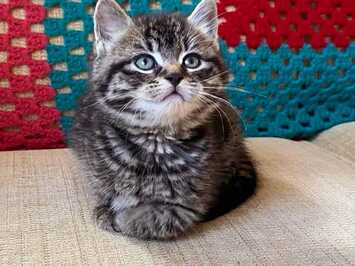




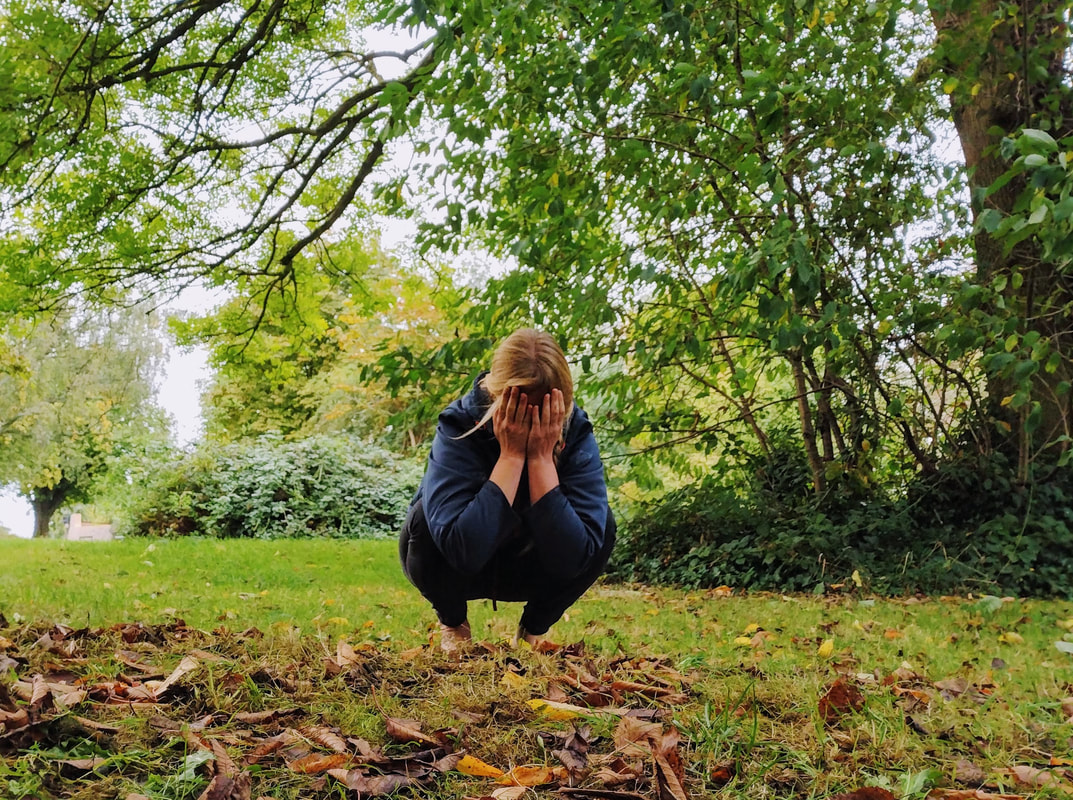











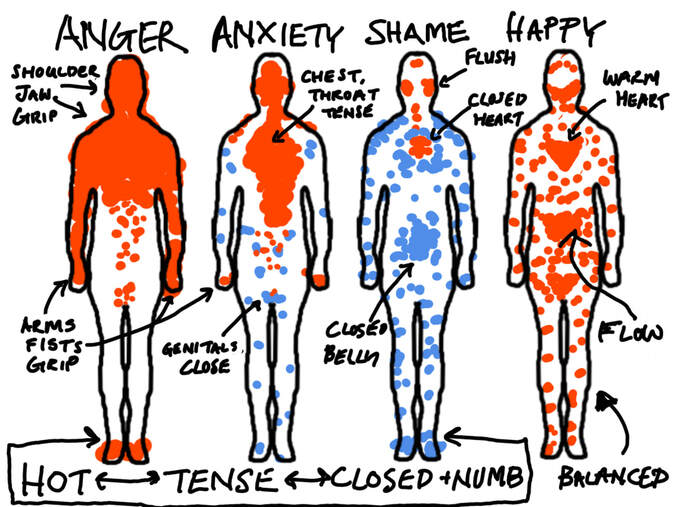





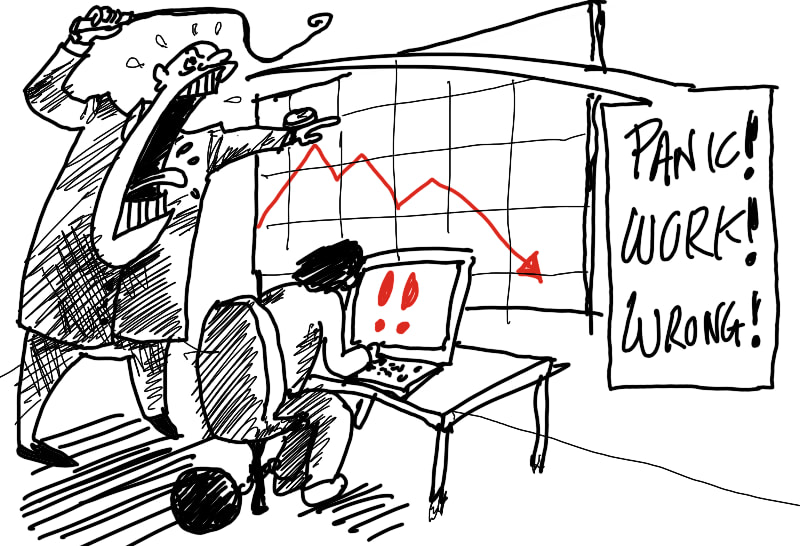

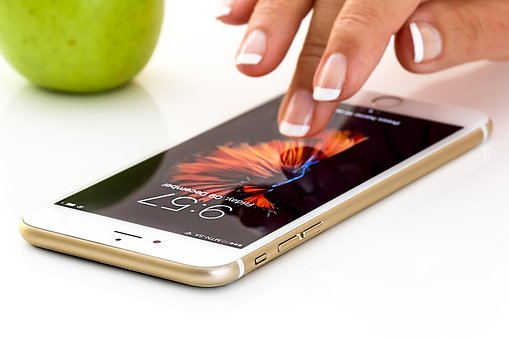
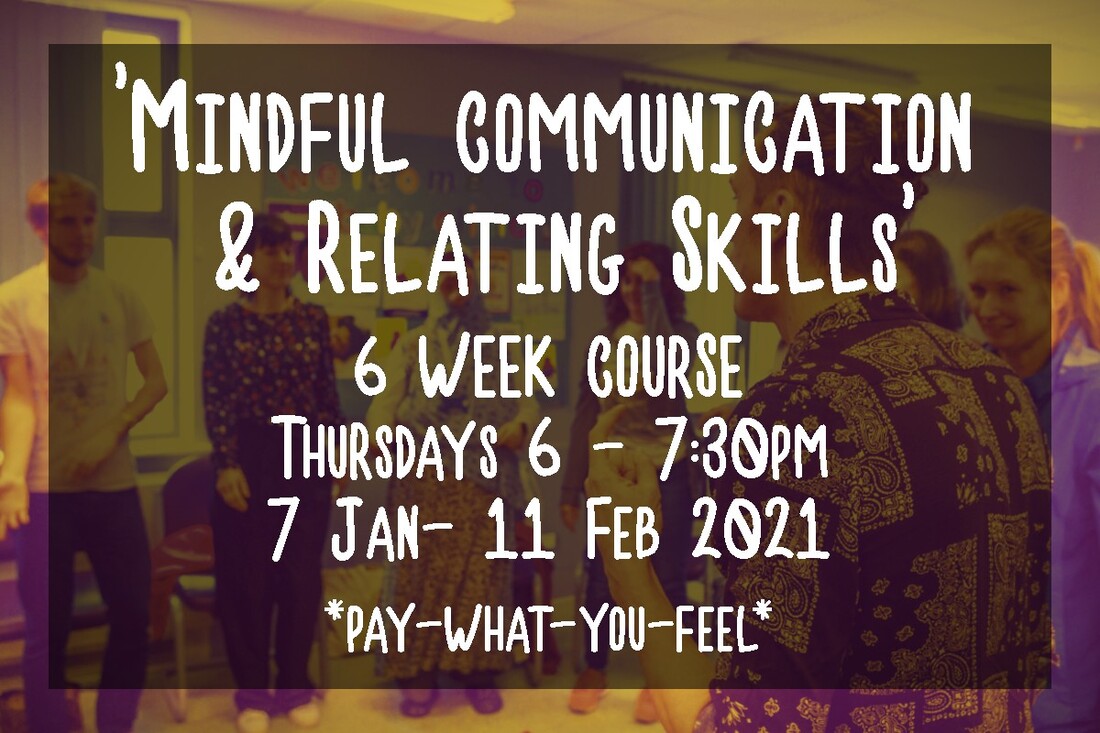







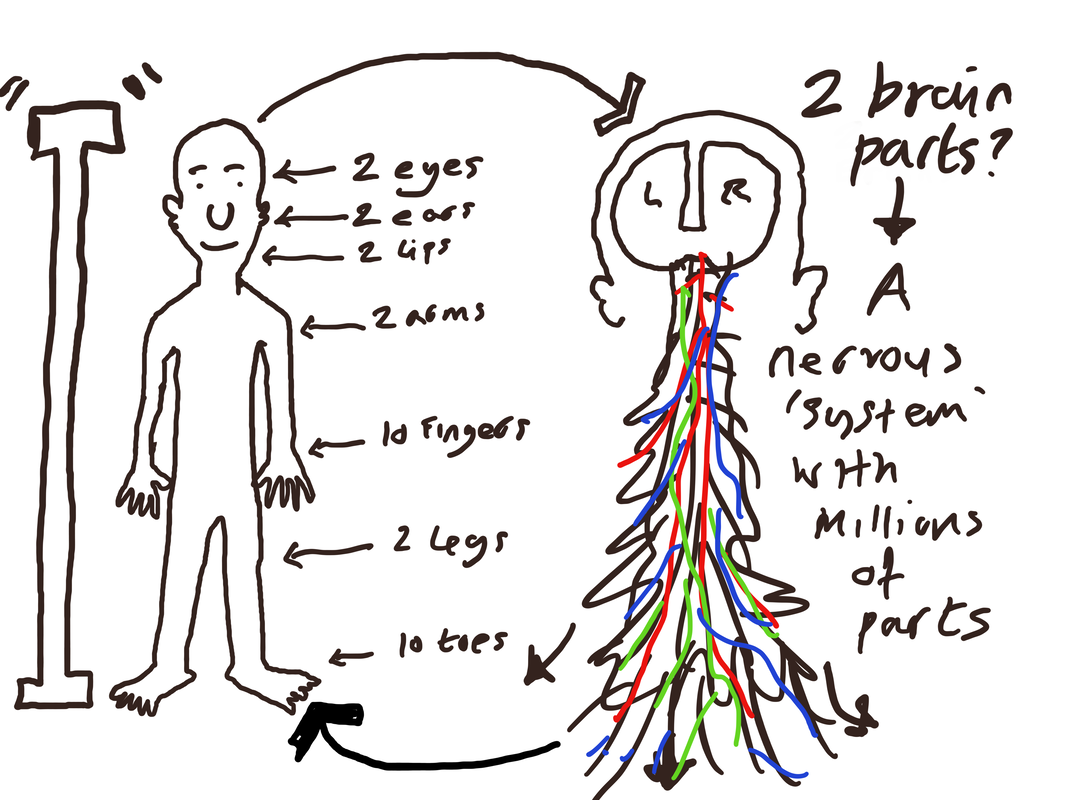

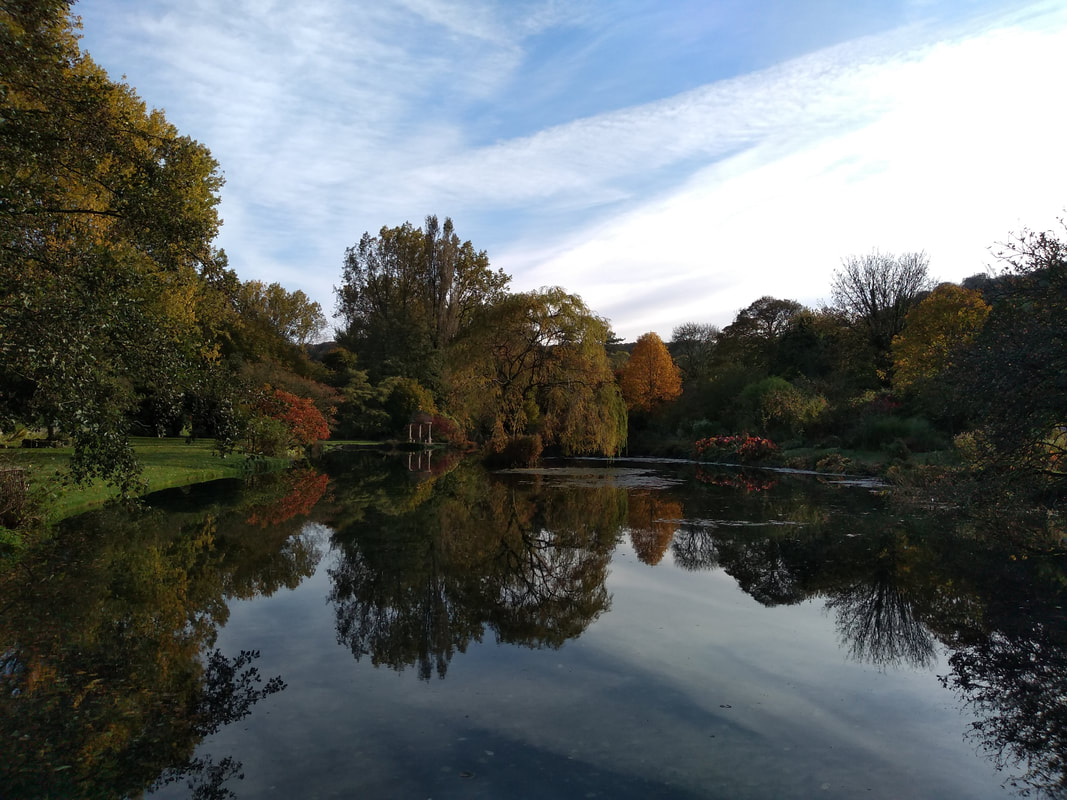

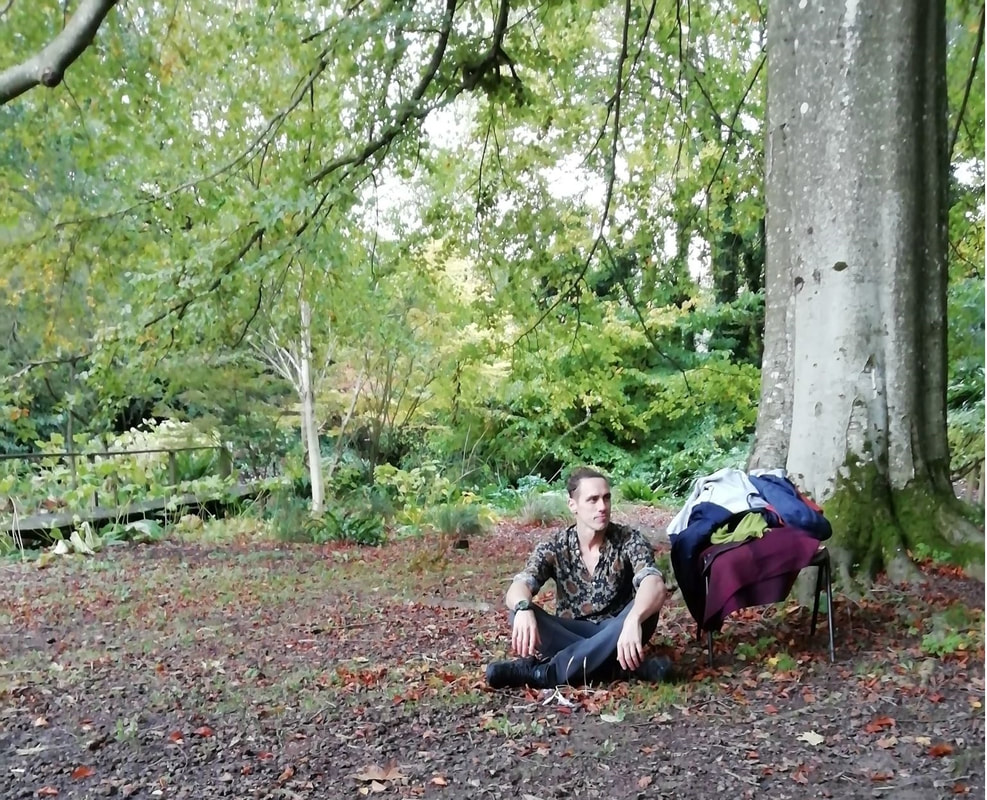


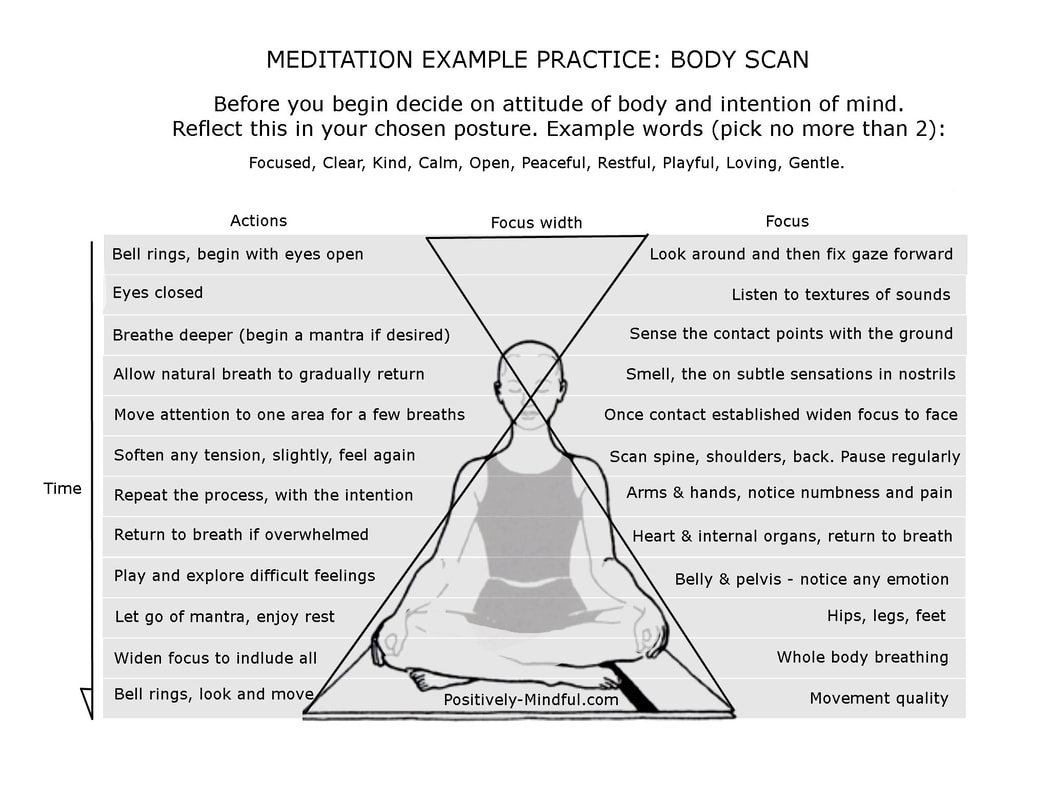
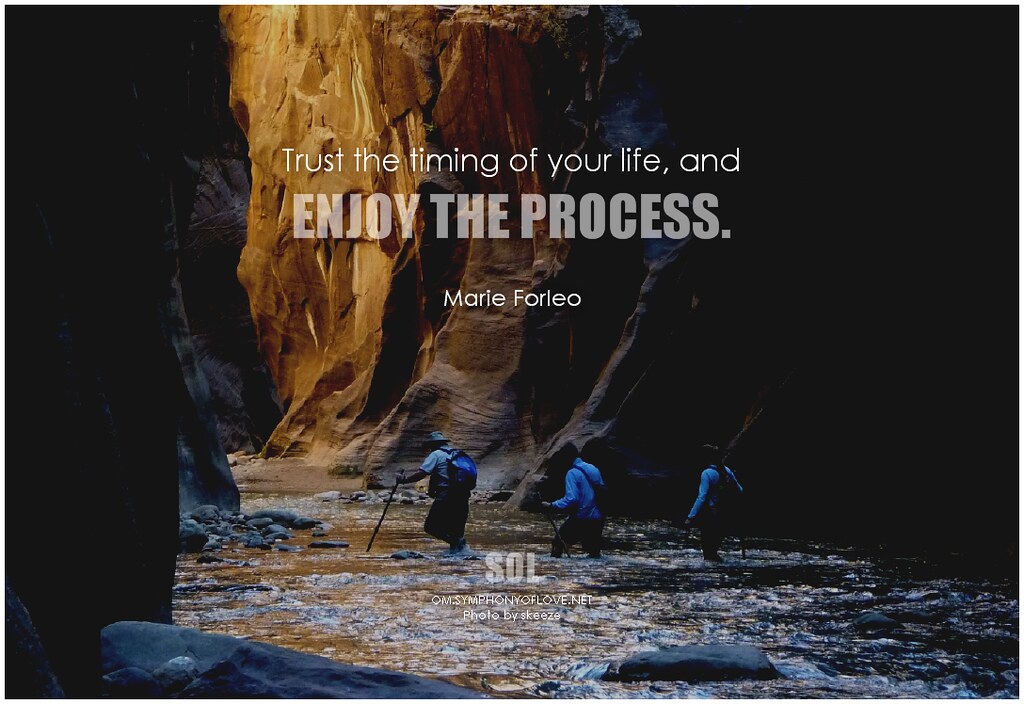
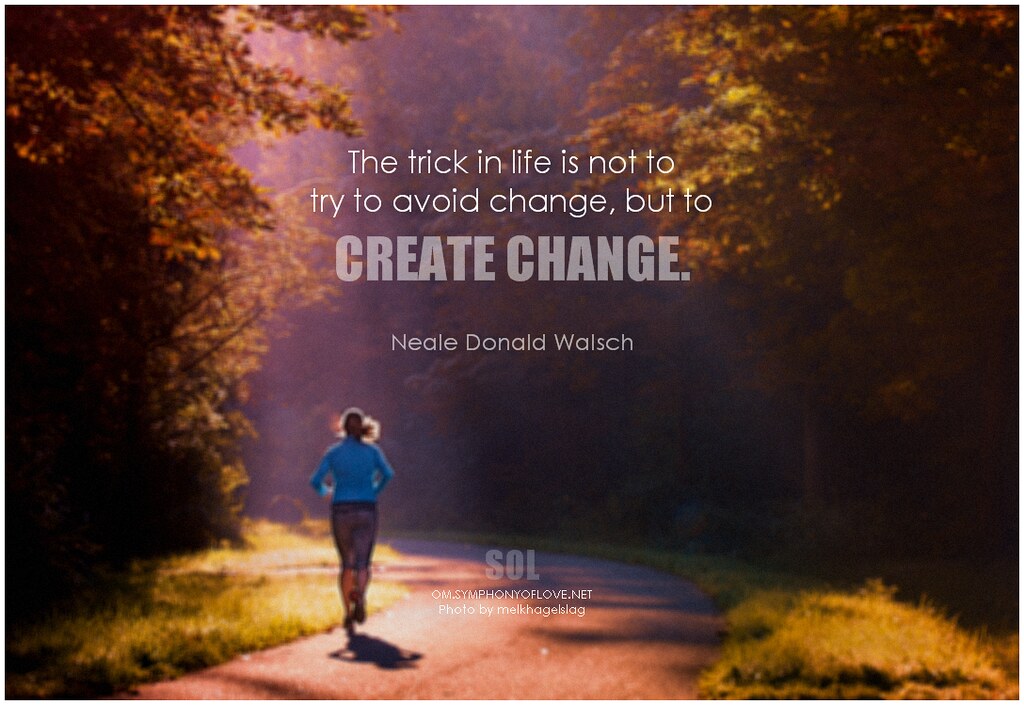

 RSS Feed
RSS Feed